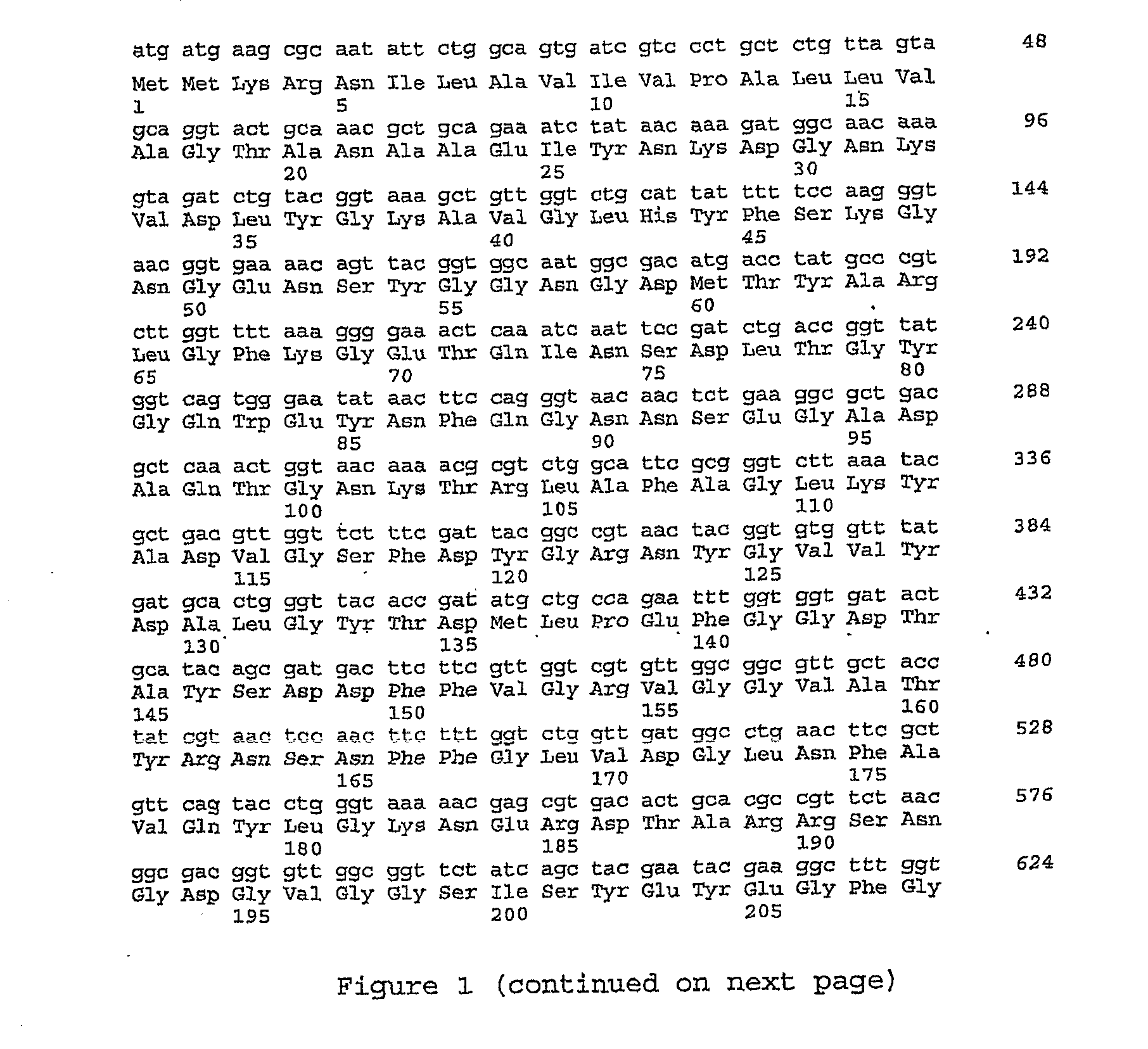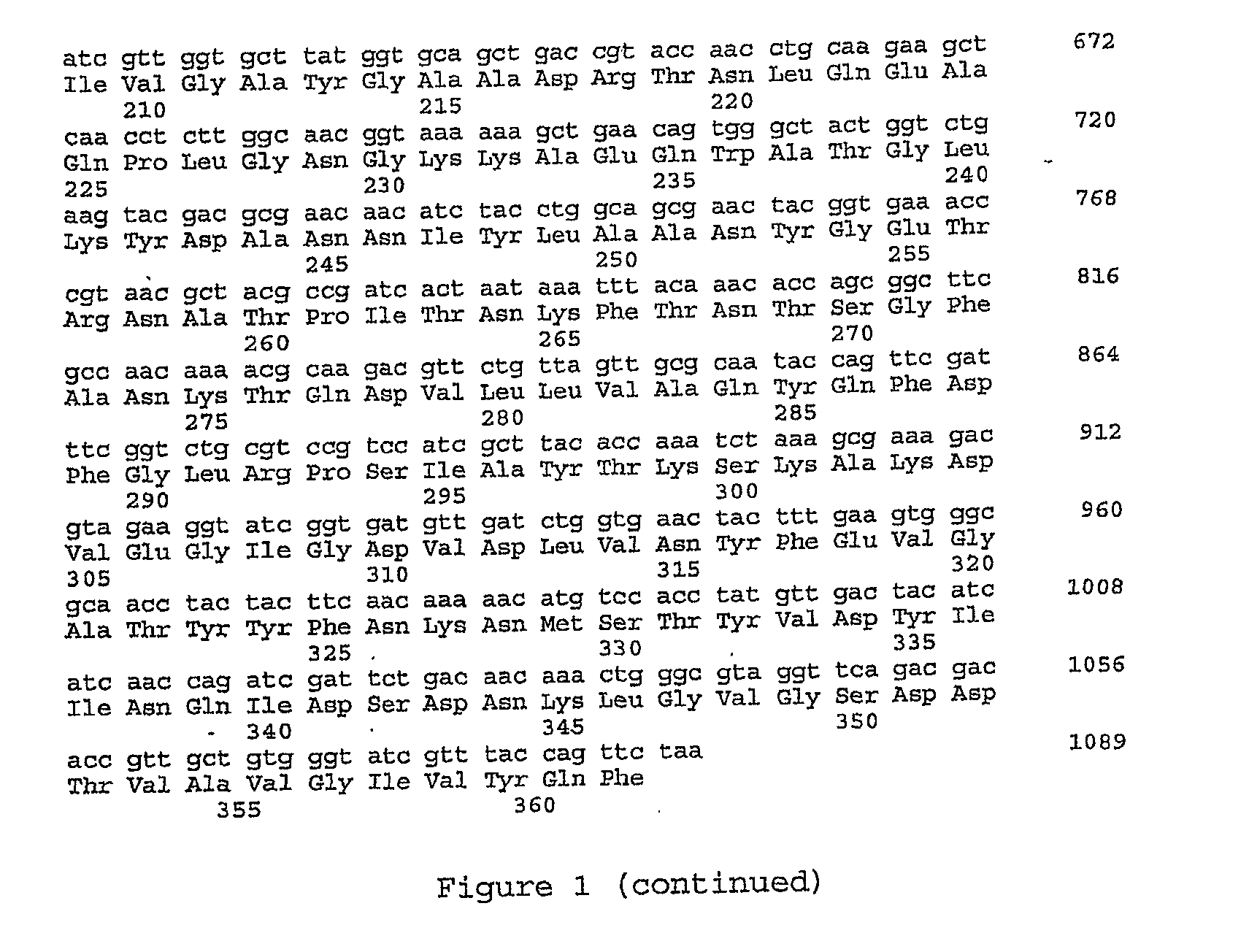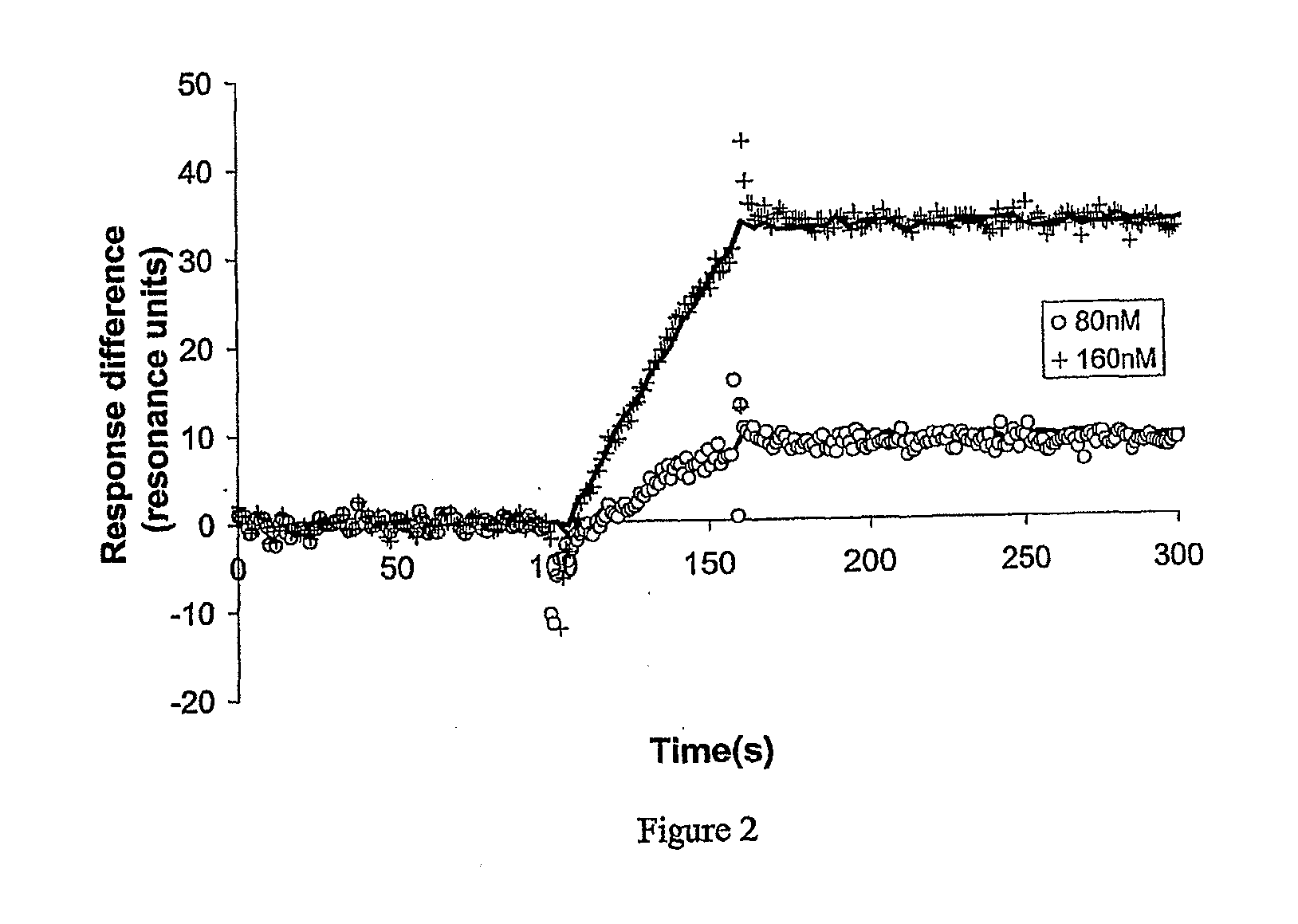Biosensor
a biosensor and sensor technology, applied in the field of products, can solve the problems of poor control of protein density and orientation, high cost of production, and inability to obtain or be fragile and unstable, and achieve the effects of rapid sample screening, high throughput screening, and improved clinical or research lab productivity
- Summary
- Abstract
- Description
- Claims
- Application Information
AI Technical Summary
Benefits of technology
Problems solved by technology
Method used
Image
Examples
example 2
[0097]Data from the SPR device is provided directly in angle shifts of the SPR signal on a time axis. This showed similar results to the Biacore data but can be related directly to surface densities which can then be used to calculate the mean thickness of the layer.
[0098]The protein immobilisation gave an angle shift of 0.31°+ / −0.17 whether the protein was dissolved in SDS or Octyl-POE (0.3 mg / ml). This was a very reproducible result which confirms the efficiency of the self-assembly process. The angle shift expected from a two-dimensional crystal of OmpF is 0.75° and thus the protein is immobilised at 40% of the maximum coverage. This is a very high level considering that no special precautions are taken to maximise self assembly, such as preformation of 2D crystals.
[0099]Thiolipid self assembly results in another 0.42°+ / −0.06 increase and PC addition is about 0.30°+ / −0.17.
[0100]The values are very constant and show that a very reproducible system of self assembly has been created...
example 3
[0101]FTIR spectra was collected of porin timers directly self assembled (1% Octyle-POE0.3 mg / ml OmpF-Cys) for one hour at room temperature and after a second stage of self-assembly using 1 mg / ml ZD-16 thiolipid in 9 omM Octyl-glucoside. Neither sample showed spectra with beta structure remaining.
[0102]Pre-treating the gold with β-mercaptoethanol (10 mM in ethanol) (at least 1 hour but now these surfaces are stored in 10 mM β-mercaptoethanol until use) causes an improvement in the retention of OMPF secondary structure. This was followed by OmpF-Cys self assembly as above followed by rapid replacement of this solution by the ZD16 solution. This self assembles the thiolipid layer without a drying step and also solubilises and removes non-specifically bound protein. The result of this is a spectrum which closely resembles the published spectrum (Nabedryk et al., 1988) and confirms that the secondary structure of OmpF is retained by this process. Incubation with 1 mg / ml phosphatidylchol...
example 4
[0104]The maximum density of self assembled OmpF-Cys followed by thiolipid provides a layer which is very conducting and this cannot be analysed by IS. The impedance spectroscopy can be measured at lower protein densities and clear results were obtained using a layer made using a 1 hour incubation with a 0.003 mg / ml OmpF-Cys solution, this is 100 fold less than the concentration used above. At 100 Hz the resistance of the surface layer dominates the real part of the signal. Addition of 10−6 M colicin R domain caused the resistance to increase showing that the layer is being blocked by the protein interaction. This effect is concentration dependent and resembles the measured affinity of the previous paper.
[0105]Binding of colicin N R domain is being studied by SPR in Newcastle and confirms the impedance data shown here.
PUM
| Property | Measurement | Unit |
|---|---|---|
| diameter | aaaaa | aaaaa |
| refractive index | aaaaa | aaaaa |
| surface area | aaaaa | aaaaa |
Abstract
Description
Claims
Application Information
 Login to View More
Login to View More - R&D
- Intellectual Property
- Life Sciences
- Materials
- Tech Scout
- Unparalleled Data Quality
- Higher Quality Content
- 60% Fewer Hallucinations
Browse by: Latest US Patents, China's latest patents, Technical Efficacy Thesaurus, Application Domain, Technology Topic, Popular Technical Reports.
© 2025 PatSnap. All rights reserved.Legal|Privacy policy|Modern Slavery Act Transparency Statement|Sitemap|About US| Contact US: help@patsnap.com



